ISABELA ISLAND
We pulled into the beautiful Tagus Cove of Isabela Island. Our hike for the day was to Darwin’s lake. It’s the likely destination of Charles Darwin when he visited the area for 5 weeks. However, since there are several inland lakes, it’s possible he visited another. In any case, it was a fun hike.
This little guy is a lava lizard (even though he’s climbing a tree). There were a lot of these little ones running around on the islands.
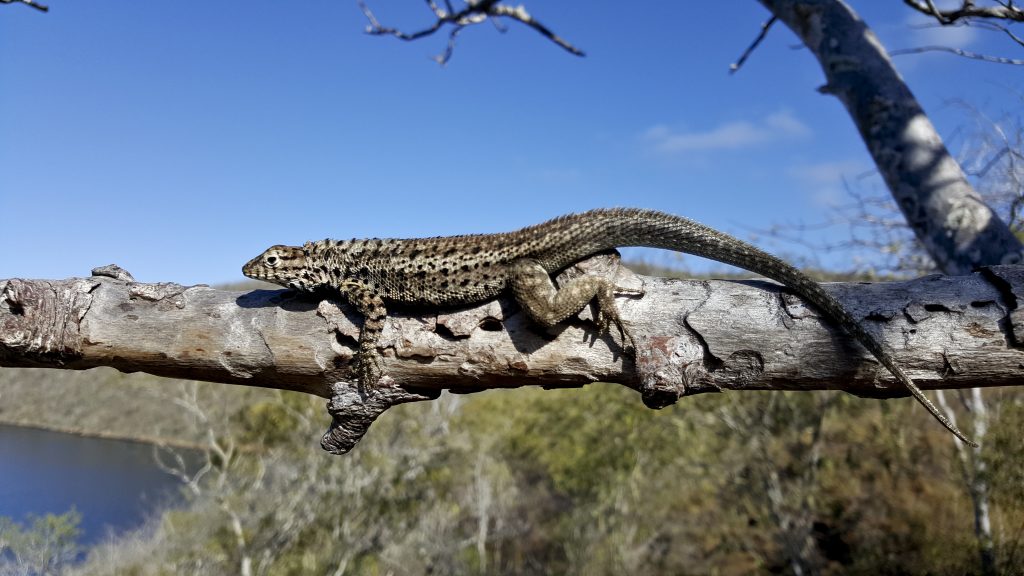
Here’s a panorama of Darwin’s Lake, with Tagus Cove in the background.

Once we finished the hike, we took a tour around the cove in the panga boats.
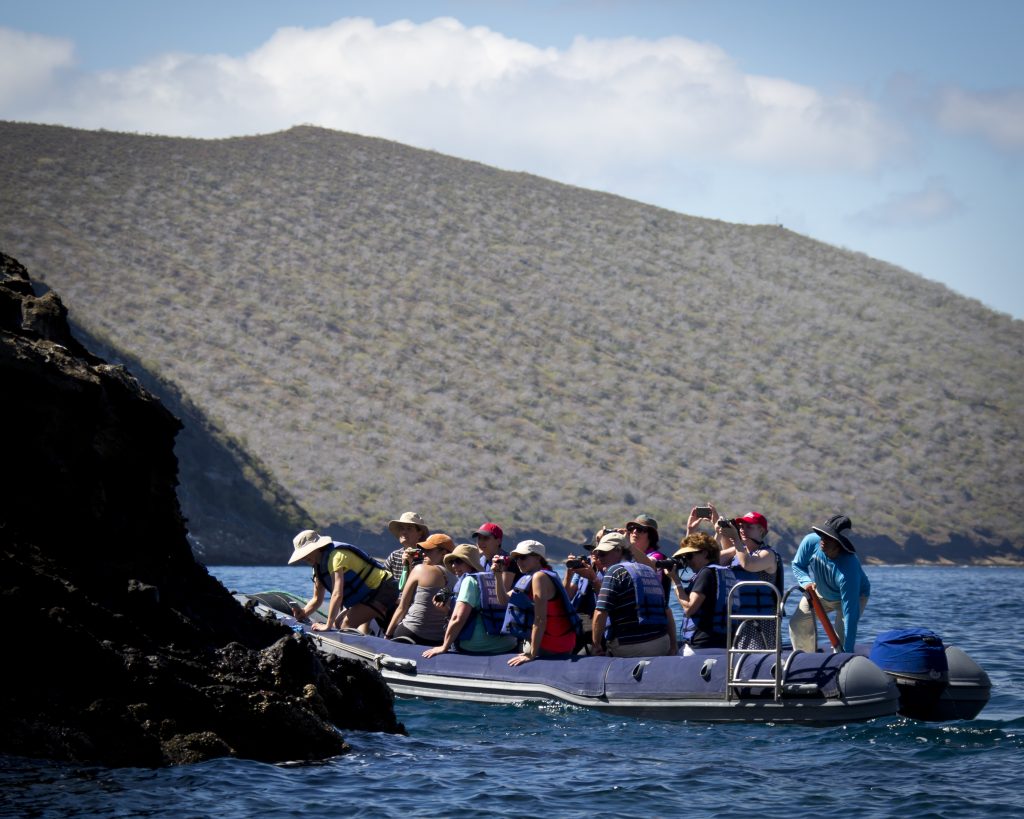
One of the great birds we saw was the flightless cormorant. It’s native to the islands, but it still is part of the overall cormorant genus. However, it’s unique in that it’s the only one to have lost the ability to fly. In fact, their wings are so small that apparently, they would need to be 3 times larger in order to fly. It is likely they evolved to be divers instead of swimmers since there were no predators until the arrival of man (and associated animals).
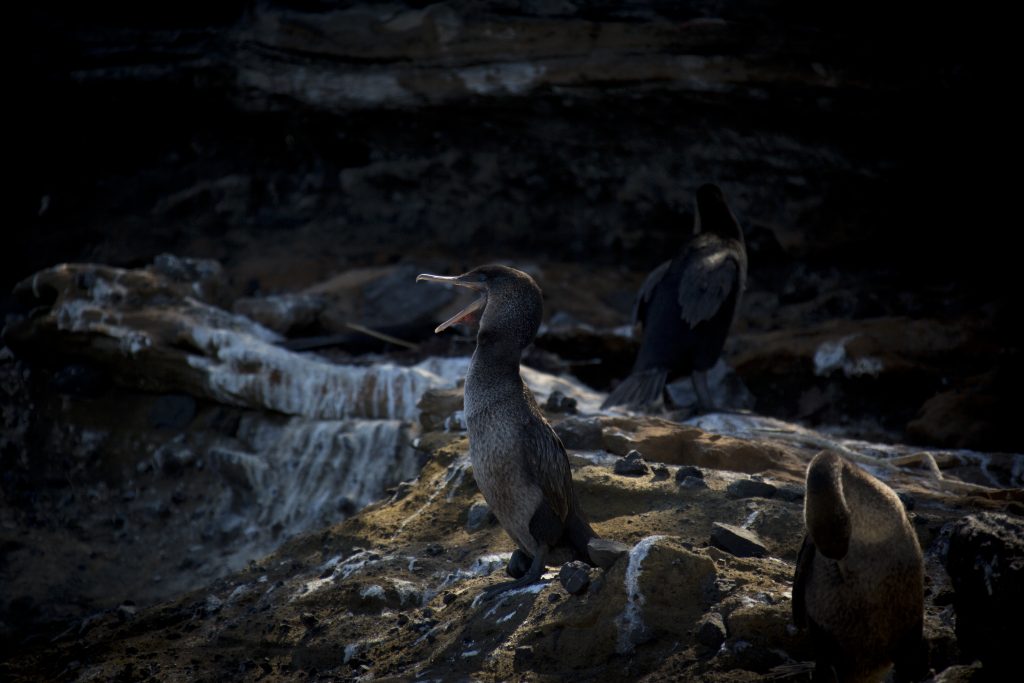
The blue eyes are really striking.
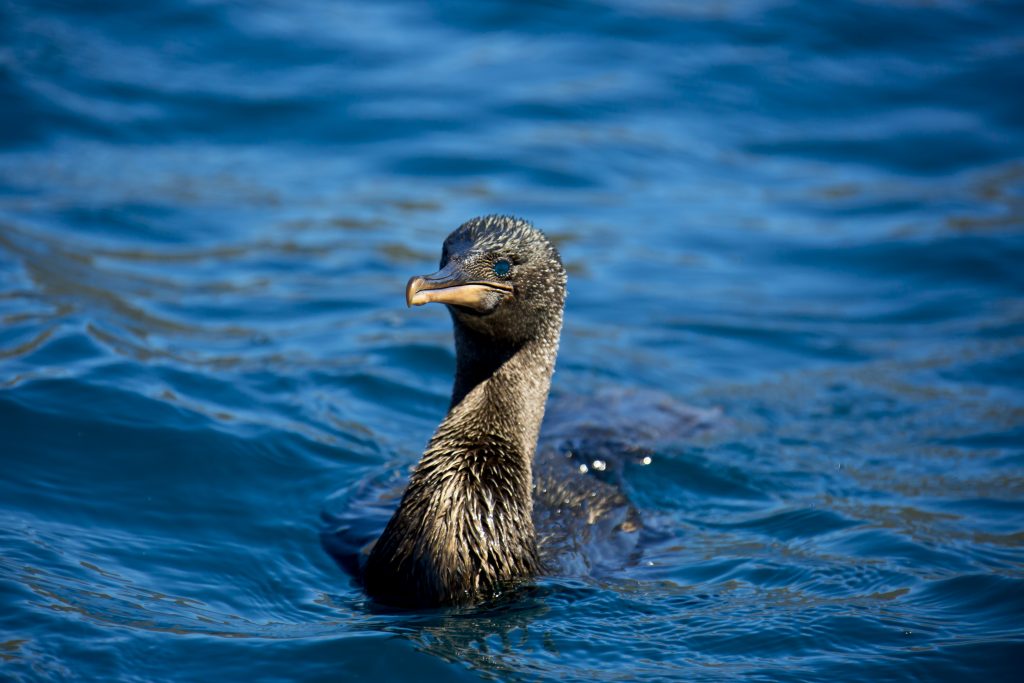
After a quick change, we headed back out to snorkel, then kayak the bay. We were able to see more flightless cormorants … including watching them fish.
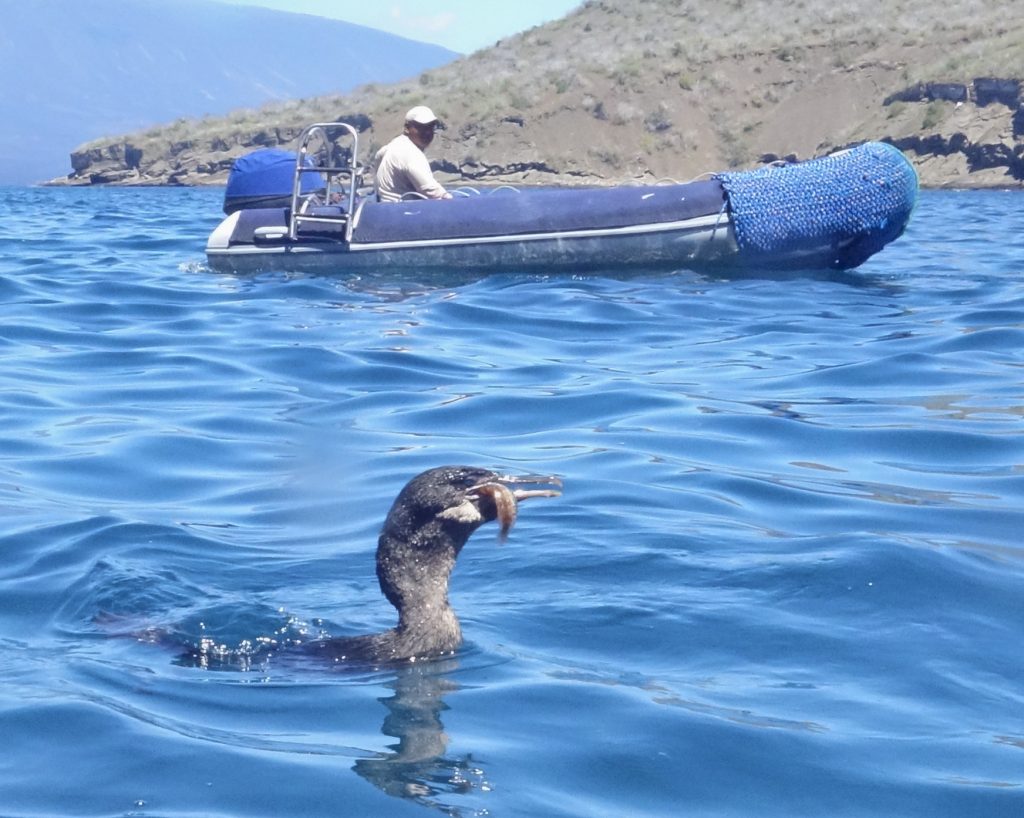
Another green sea turtle.
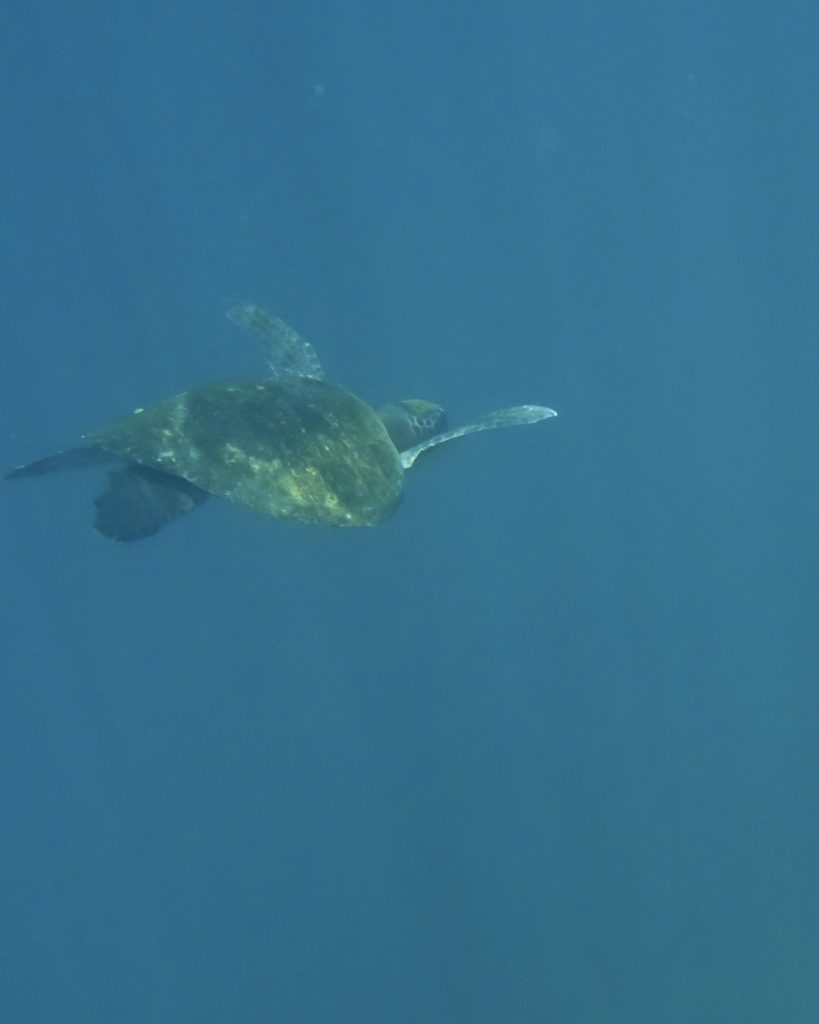
At this point, while we were out kayaking, tragedy struck our boat. I’m sad to say, one of our shipmates died while snorkeling. It was a shock to everyone, but most of all to his girlfriend, who was with us too. We don’t know what caused it, but he was gone very quickly and there was nothing we could do for him. We could only support her. Everyone came together to offer whatever support we could, small comfort though it was.
As you can imagine, everything changed at that point. Since the local authorities couldn’t come to us and they didn’t consider it an emergency at that point, we had to make our way 12 hours to reach the hospital in Baltra on Santa Cruz. Once we got there, the authorities took over and interviewed the crew. Soon after, they determined that no one was at fault. The woman (of the couple) was such a model of strength and held tough throughout. She also selflessly wanted the rest of the passengers to enjoy the remainder of the cruise. She gathered their affairs and decided to stay with his body on the return to the US. We said a sad farewell to both as they left under the worst possible conditions. Some of the passengers were able to stop by and see her before leaving at the end of the cruise. To make an incredibly difficult situation more challenging, she had to stay for several days in Quito waiting for the paperwork with the embassy to go through (a certificate of death abroad needs to be accomplished), before flying home to the US. Again, it was a horrible tragedy, but everyone was able find the strength to get through it. I was proud of our fellow shipmates and crew, and our collective heart went out to the wonderful woman who had lost the love of her life … a young man in his 40s who, in our short time together, showed us what a kind, wonderful person he was. They were very much missed when they left the boat. Anna and I hope she is well and has been able to grieve.
Since we were now in a completely different location, our itinerary changed completely. We had to keep moving.
On the way over to Baltra, we came across a super-pod of bottle nose dolphins.
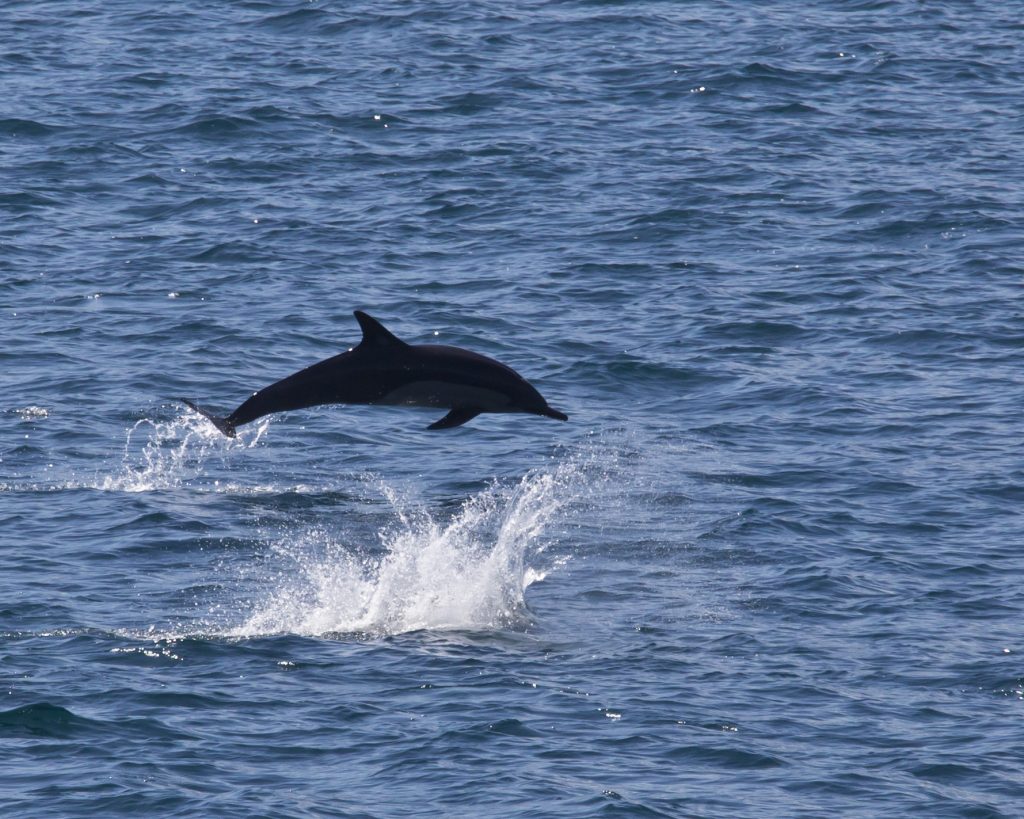
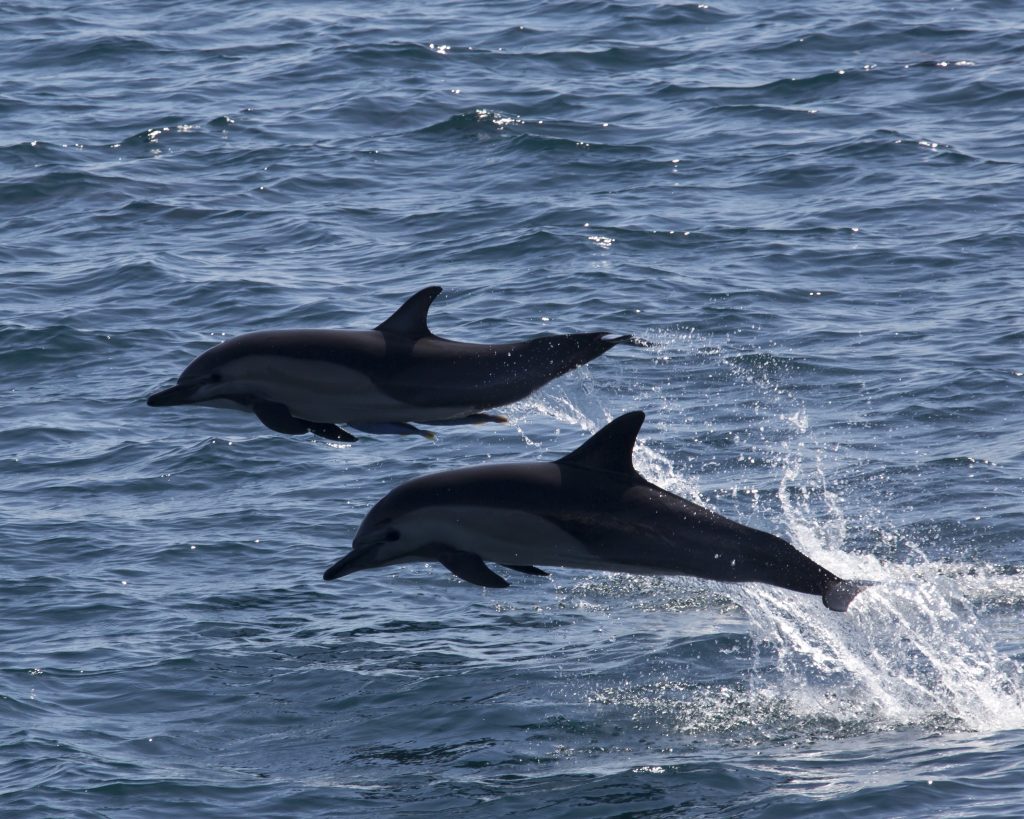
A veritable wall of dolphins. This image doesn’t even capture half of them. There were hundreds of dolphins.

SANTA CRUZ
After arrival in Baltra, we hopped on a bus to the highlands of Santa Cruz (AKA Indefatigable) to see the Galapagos giant tortoises in their natural environment.
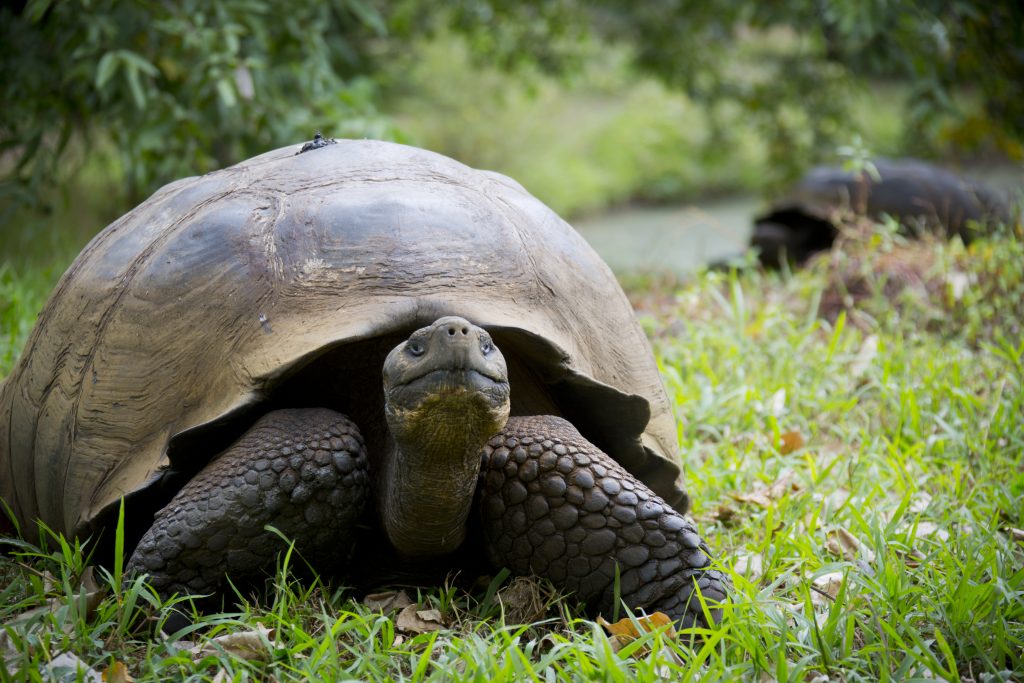
Although you could get very close to these huge/ancient creatures, we were told it was best to maintain at least 2 meters distance.

It is estimated that there were 250,000 giant tortoises on the Galapagos since there are no natural predators. However, as humans arrived, they realized that the tortoises were easy to catch, huge and could live in captivity for up to a year with no food or water. So, sailing crews would simply stack tortoises on their back in the hold of the ship so that they would have fresh meat on their journey. This practice (among others) nearly wiped out the entire tortoise population. 10 of the original 15 subspecies still exist on the Galapagos. The only other place giant tortoises exist is on Aldabra in the Seychelles in the Indian Ocean. Also, since they never stop growing, the Galapagos giant tortoise weighs up to 417 kg (919 lb).

You can see his head is starting to retreat back to the shell … that told me I was a little too close and making him uncomfortable. I backed up.
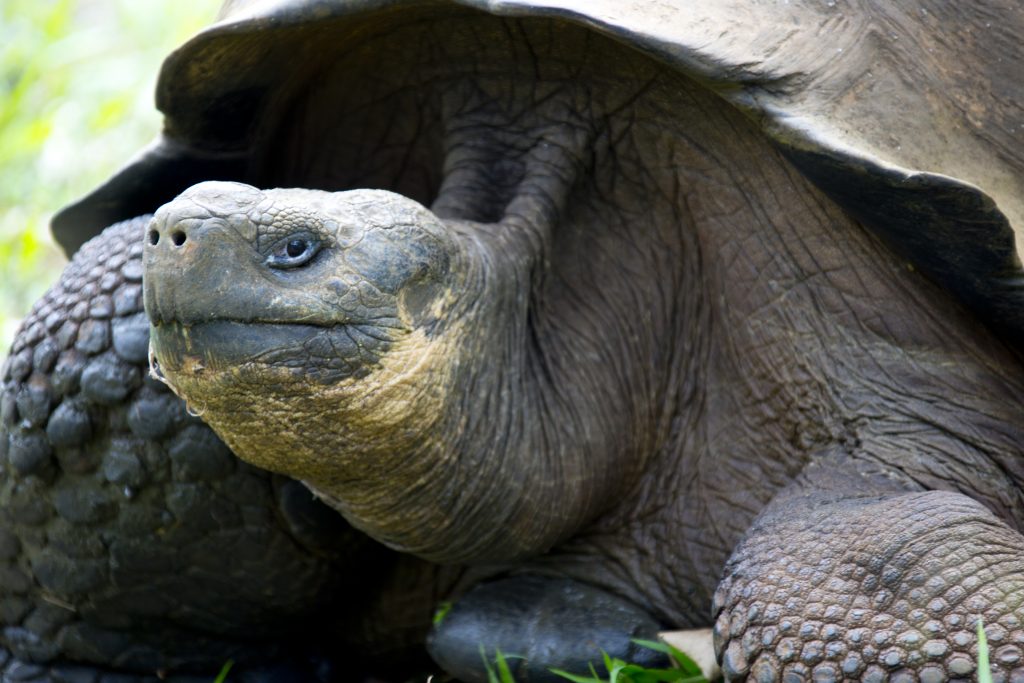
The tortoises love the mud to stay cool and grass to each. There was an abundance of both at this location.
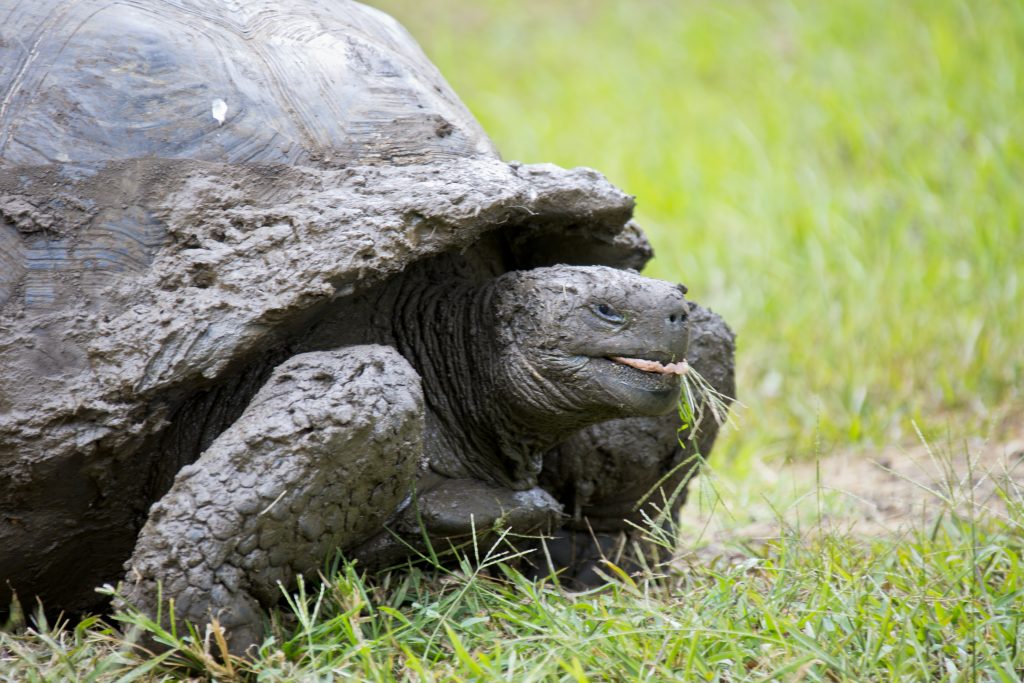
Anna in the image for perspective … however, she’s 2 meters behind the tortoise. Oh, and for clarity, a tortoise lives entirely on land, while a turtle lives on land and water. Kinda like the difference between a frog and toad. 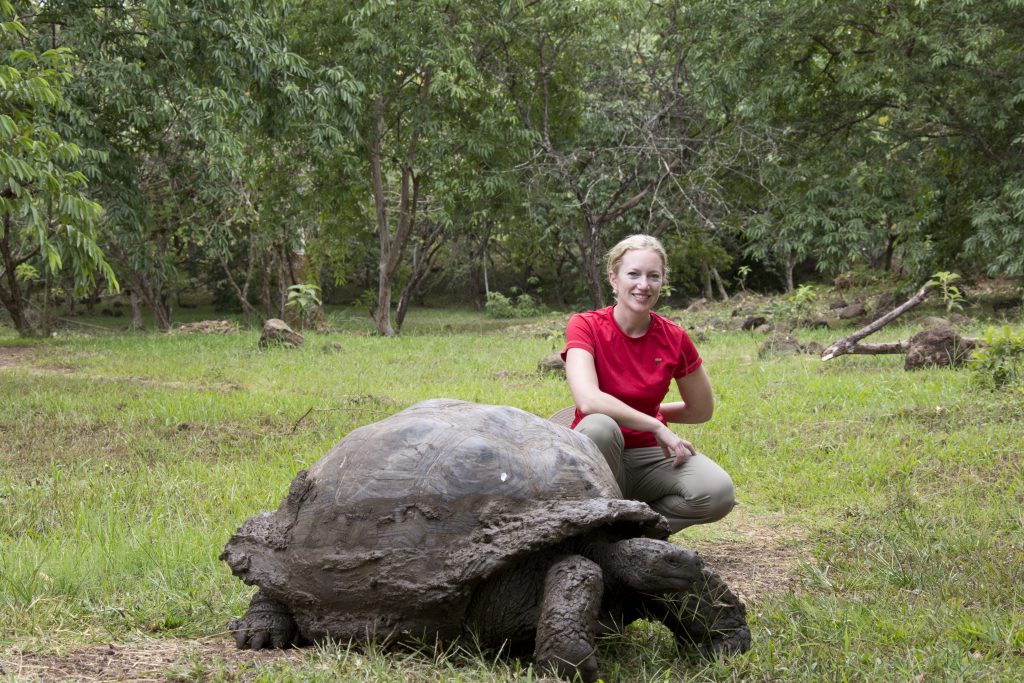

You can approximate the age of a tortoise by the relative size and wear on its shell. The smoother the rings are, the older the animal is. They can live to be at least 170 years old.

Staying cool.

And comfortable.
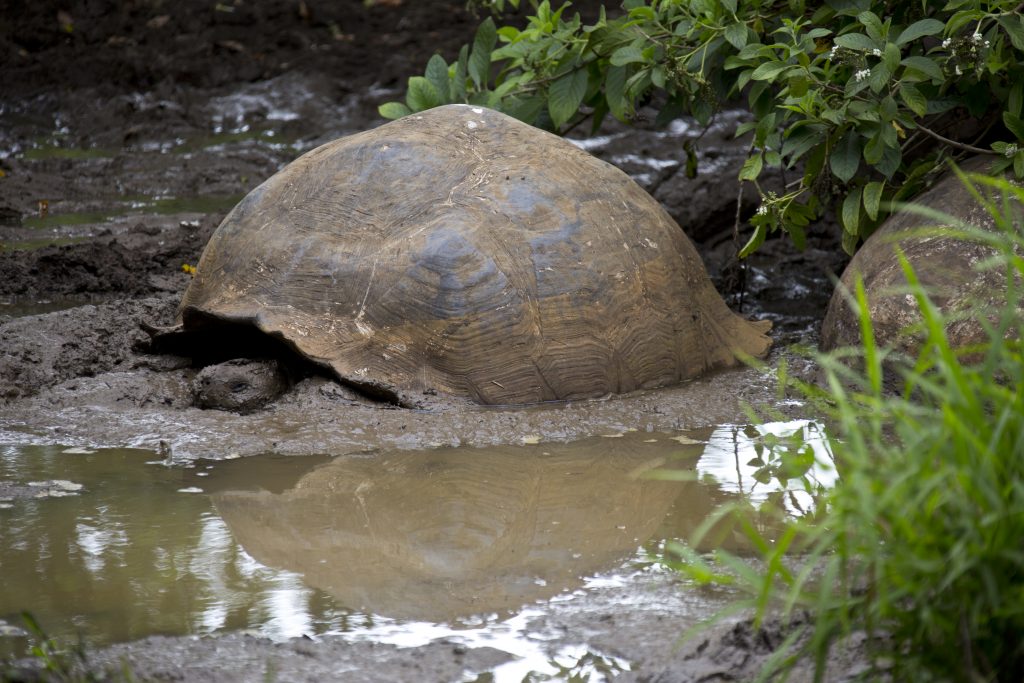
Slightly different habitat.
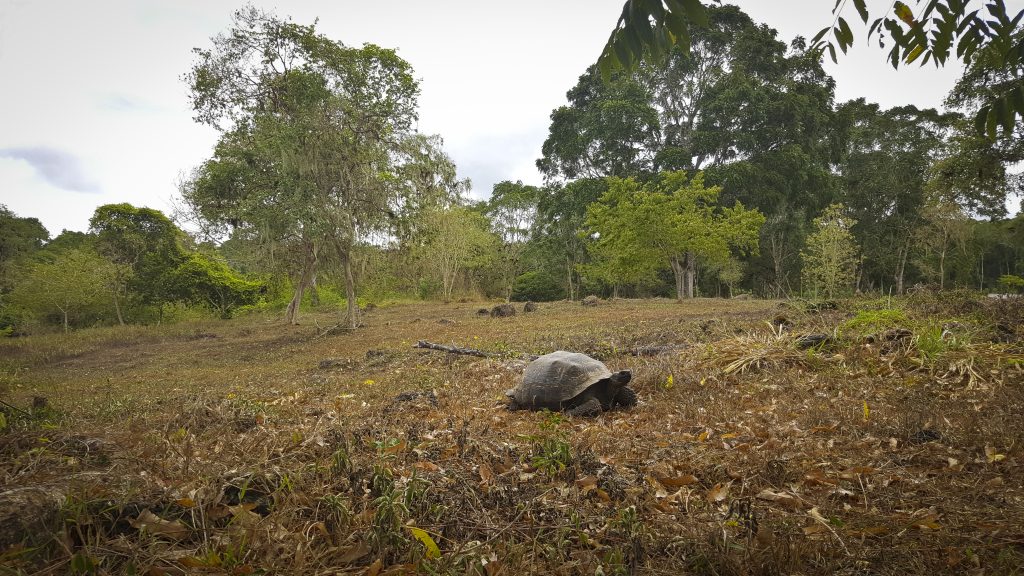
In arid areas where the tortoises had to reach up for food, the shells developed into what looked like a saddle. Therefore, they are called saddle backs.
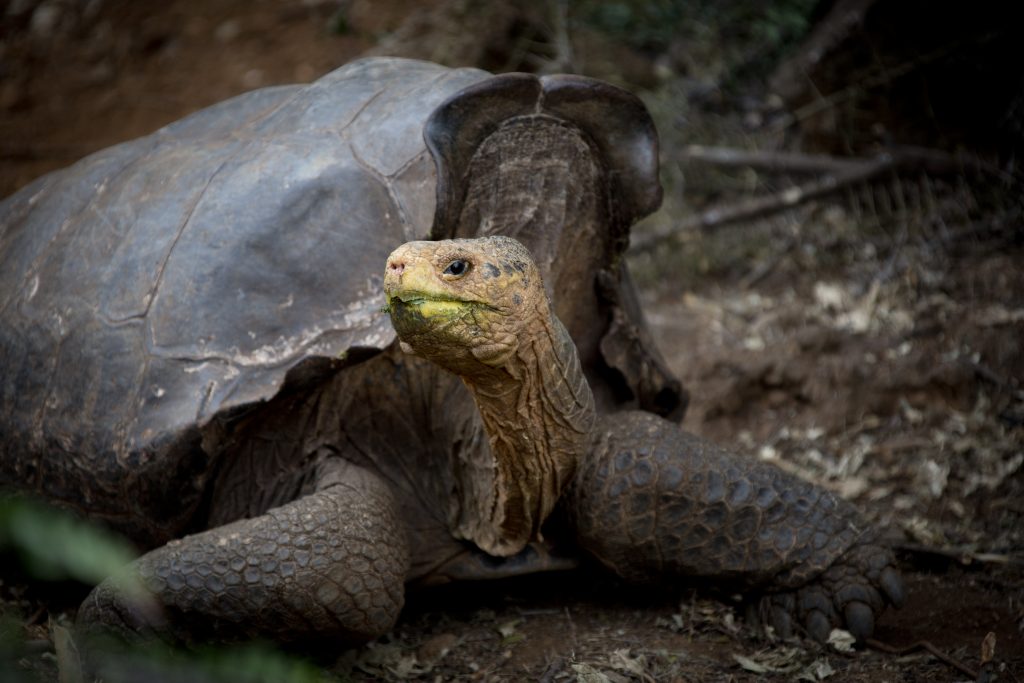
This particular tortoise is very famous. His name is Diego and is over 100 years old. 50 years ago, his sub-species from Espanola only had 2 males and 12 females. Sadly, they were too spread out to mate in the wild and risked becoming extinct. However, there was hope in the US. Diego had likely been captured on Espanola sometime between 1900 and 1959 and put into captivity in the San Diego zoo (hence his name). He and a few others were charged with repopulating the entire sub-species and brought back to the Charles Darwin breeding center in 1976. When he arrived, the other tortoises in captivity weren’t breeding. Diego showed them how to do it and became the dominant male. So, Diego has done his part and then some. In the time since his repatriation, he has fathered 800 off-spring or 40% of the tortoises released into the wild on Espanola! Quite a feat for the relatively slow breeding giant tortoise. Effectively, he single handedly brought his species back from near extinction.
Well done, old boy!
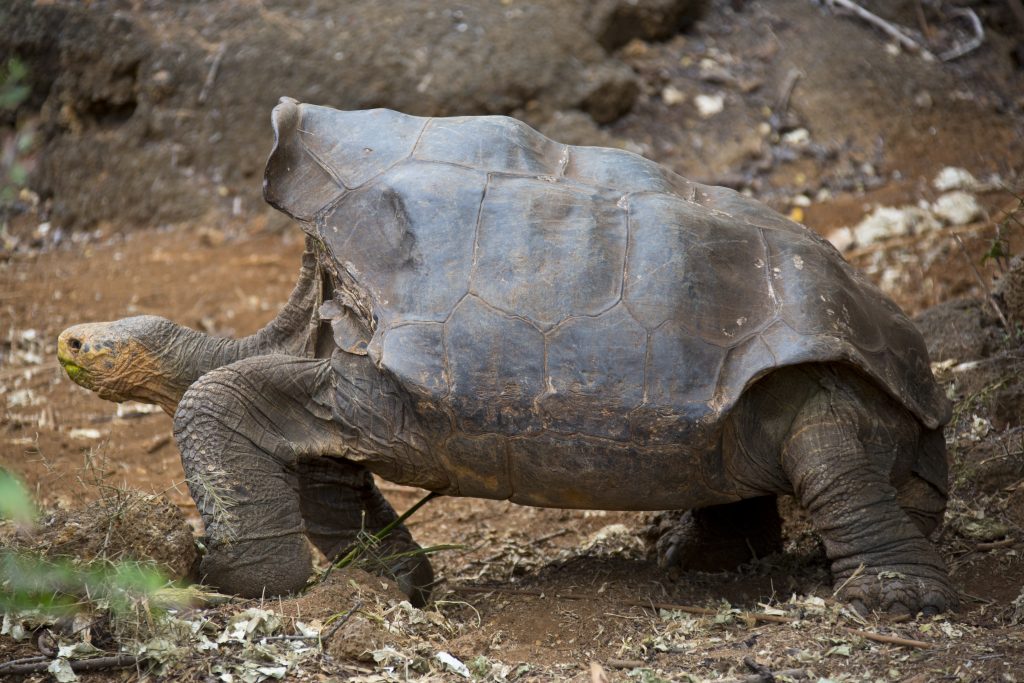
The fish market in Puerto Ayora had a little of everything. The star attraction wasn’t the delicious fish brought in straight off the boat. It was the strap-hangers looking for a handout.
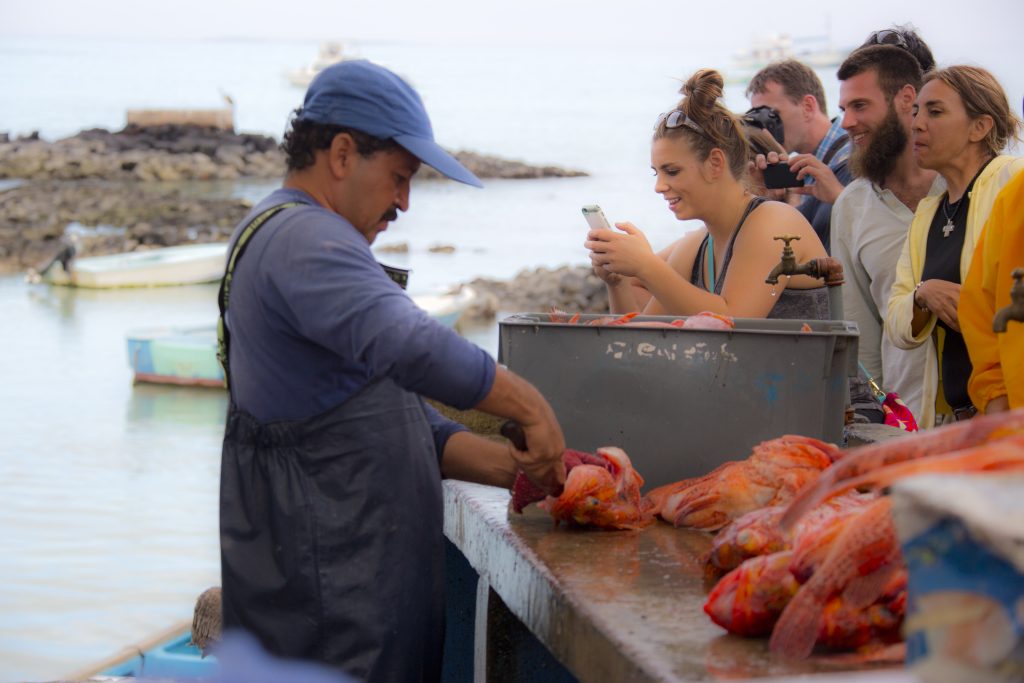
A few sea lions were waiting somewhat patiently for scraps to come their way. They were surprisingly well behaved in my opinion.
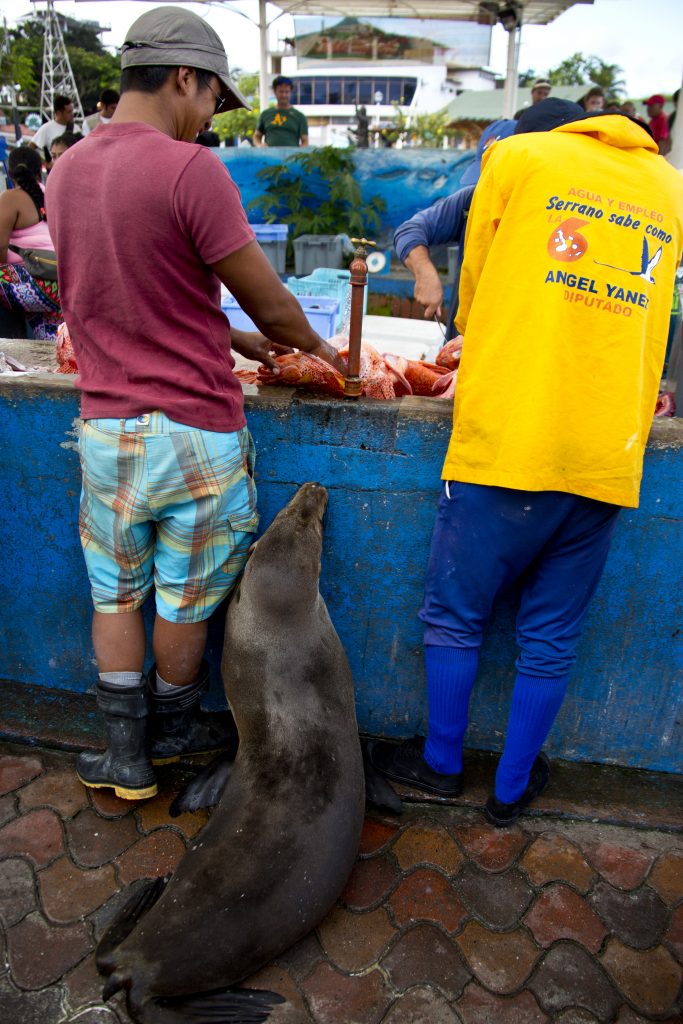
Mmm, I love yellow-fin tuna.
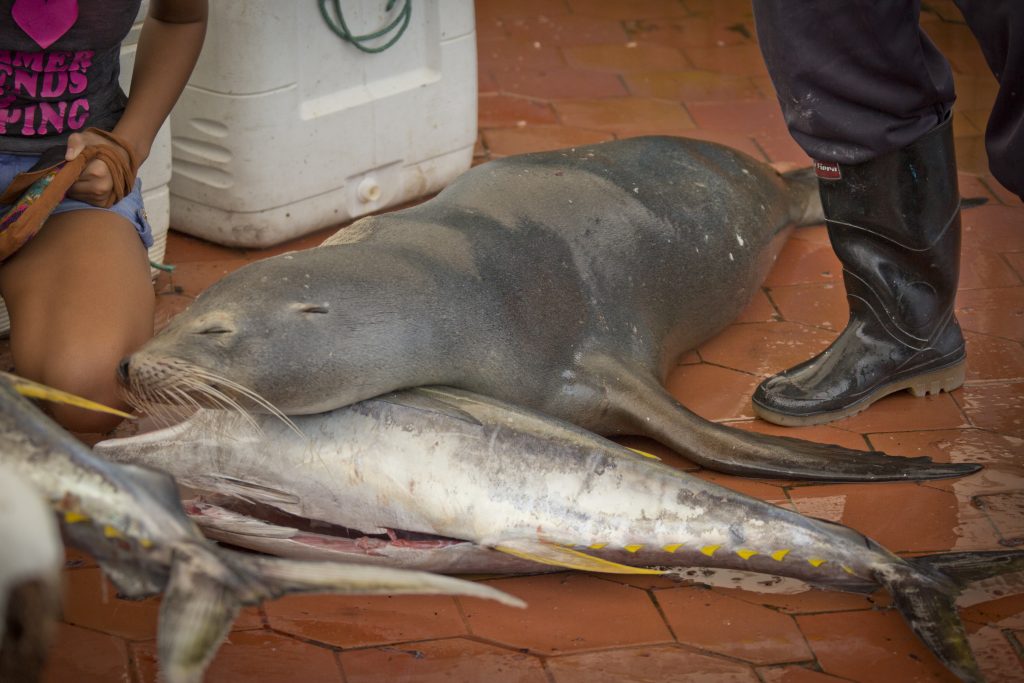
Oh, that looks nice!
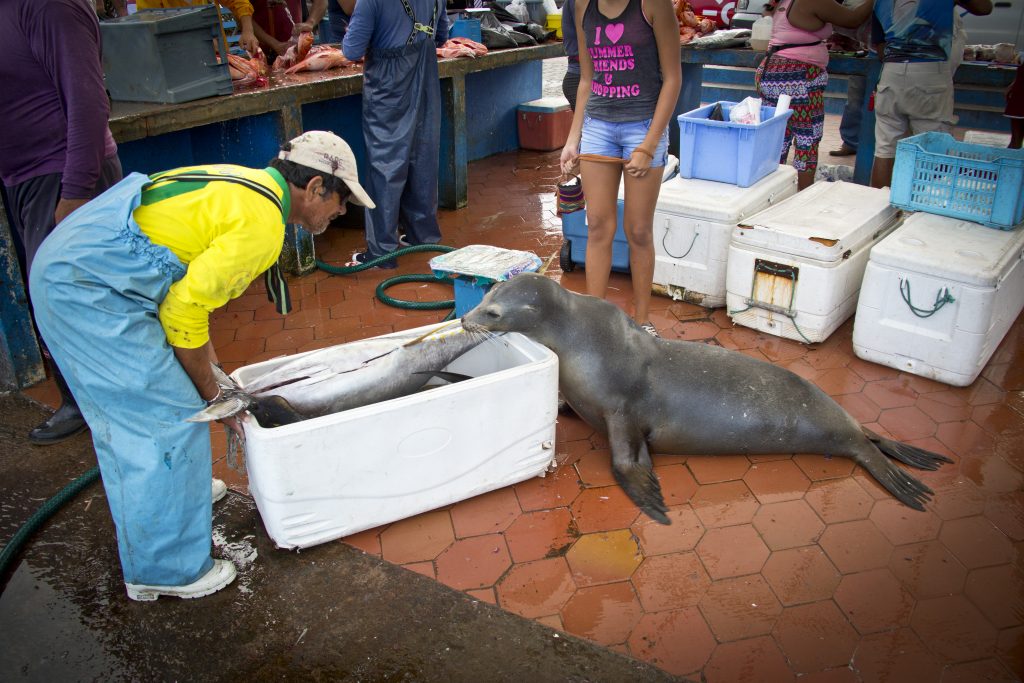
Even the normally vegetarian marine iguana is looking for a quick bite.
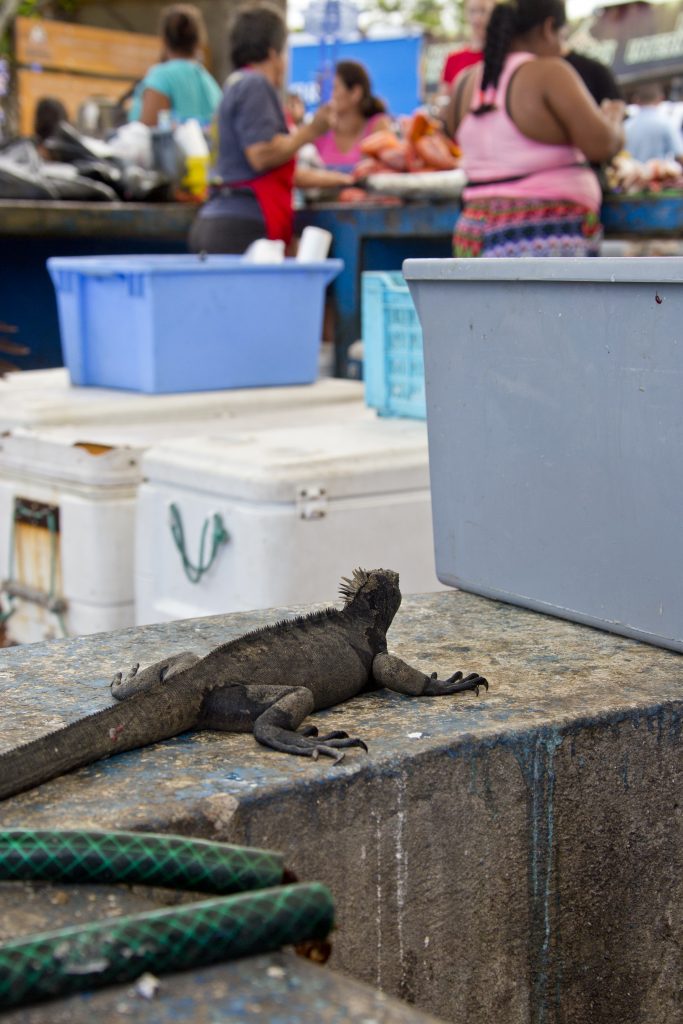
The pelicans were flocking.
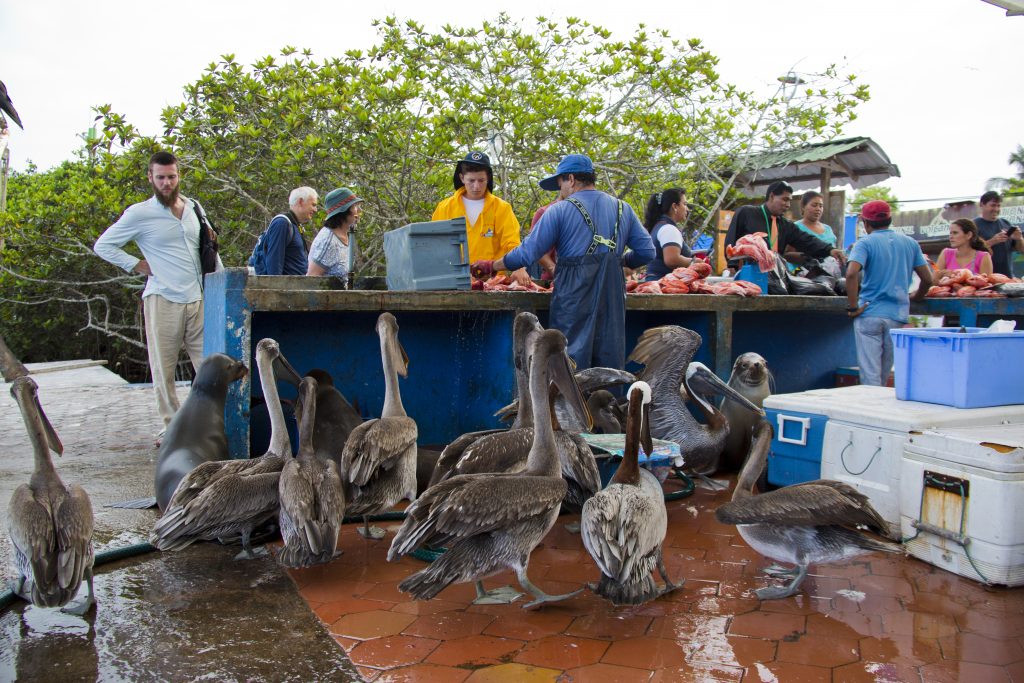
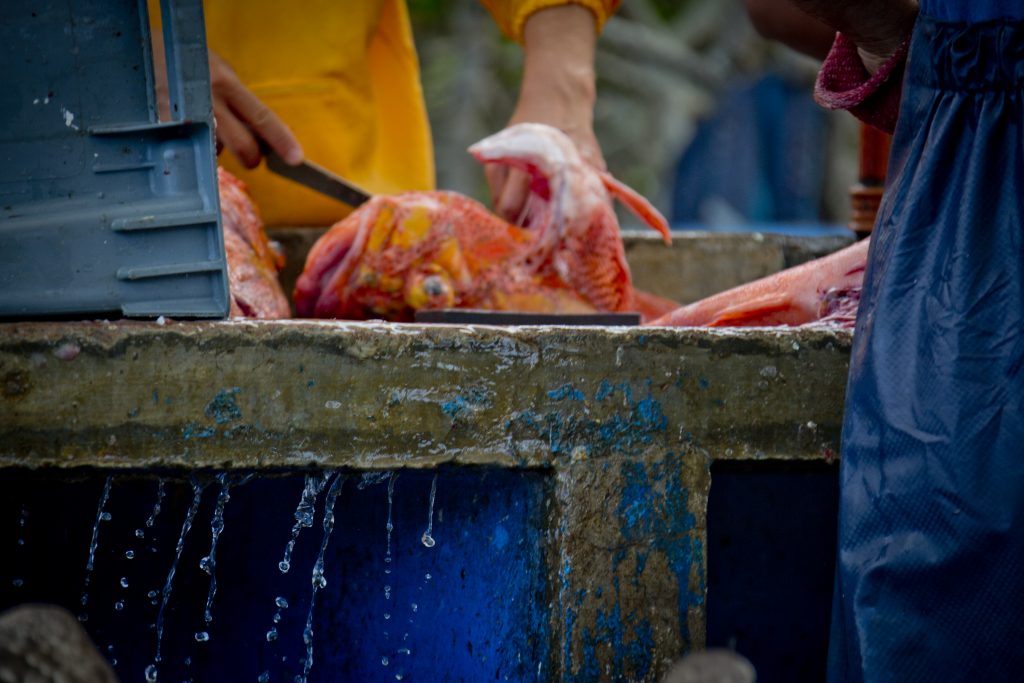
Yes! Got a bite.
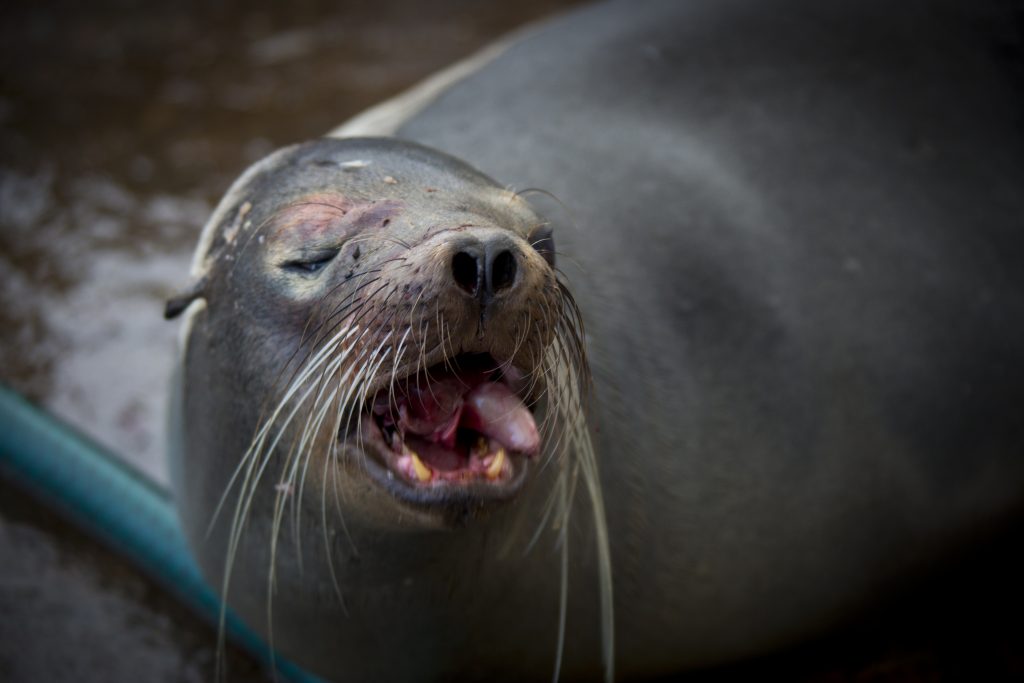
Helping clean the fish…
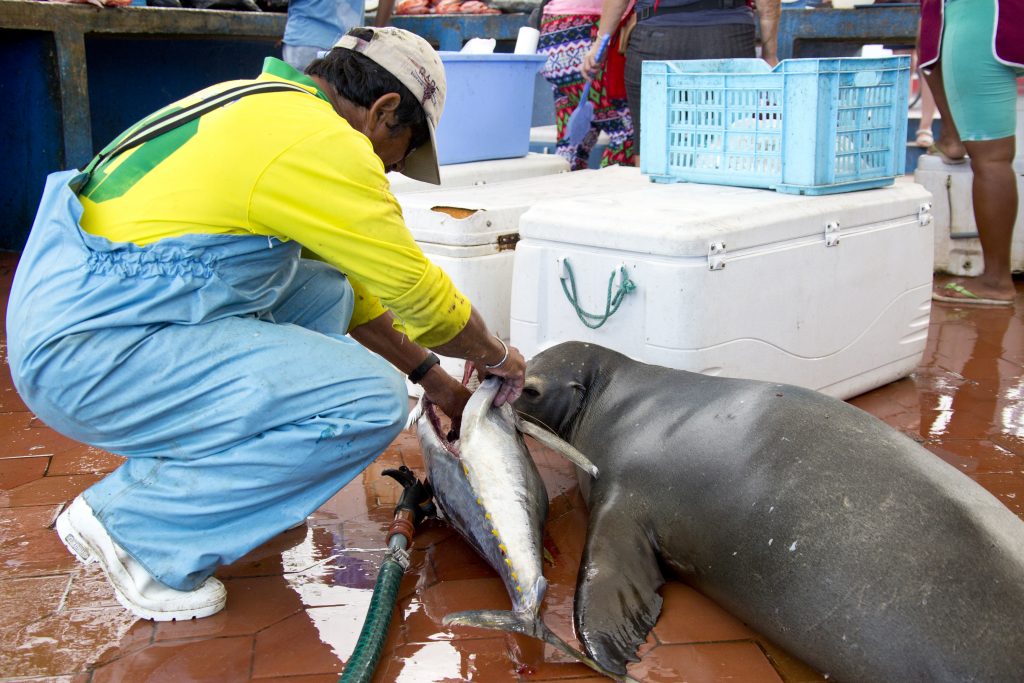

Good thing that pouch is so big.
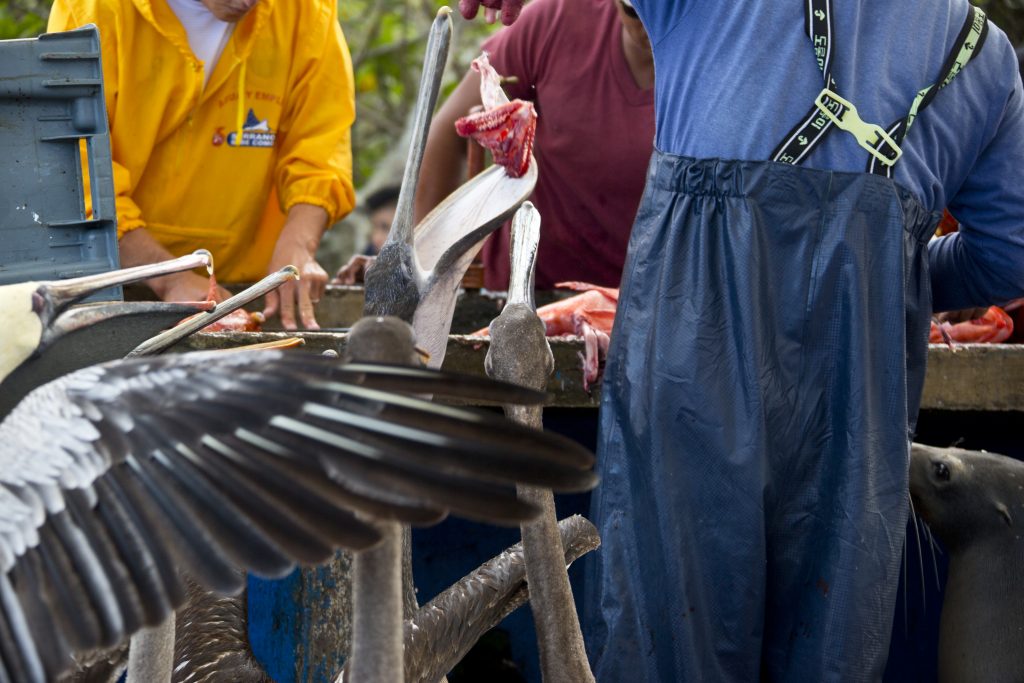
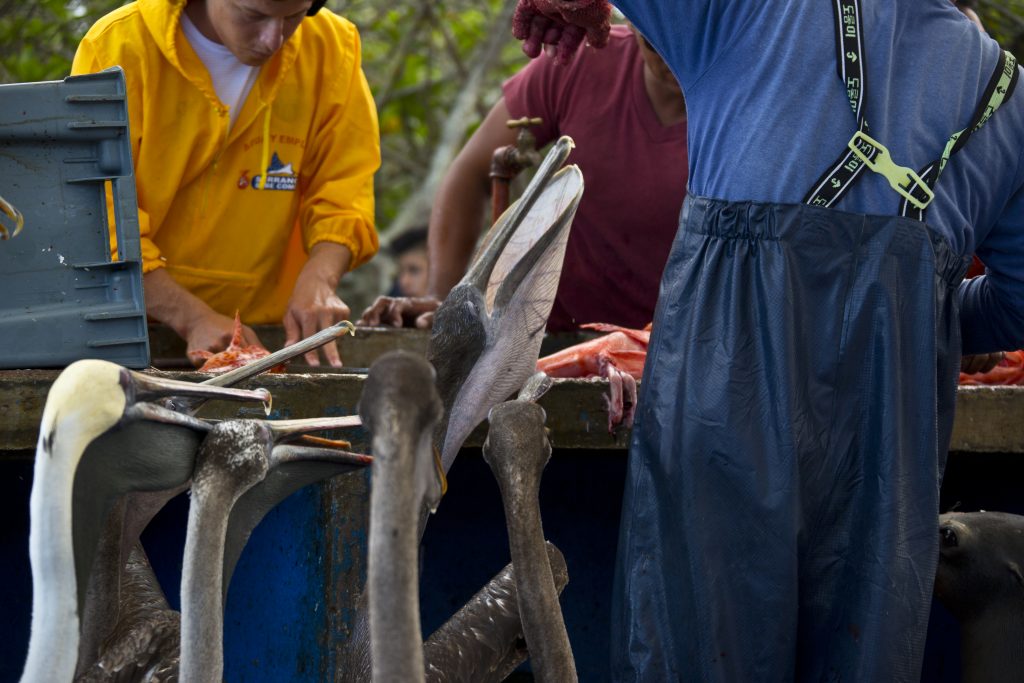
Bright red grouper, which will likely be going the local restaurants.
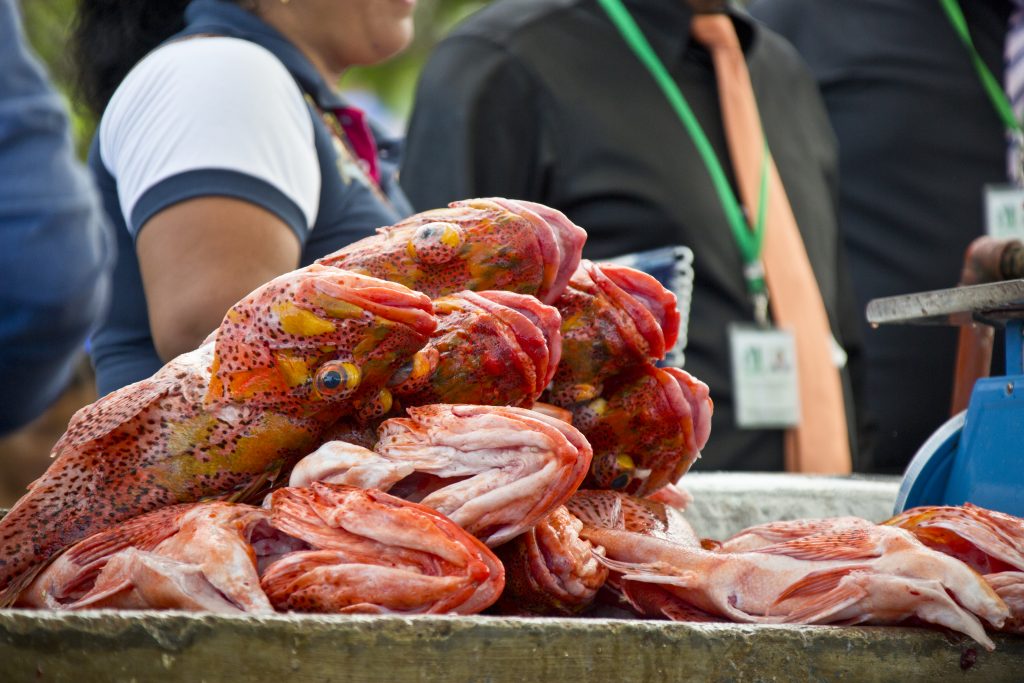
The frigatebirds hovered (impressive flying skill) for a moment to grab a bit too.
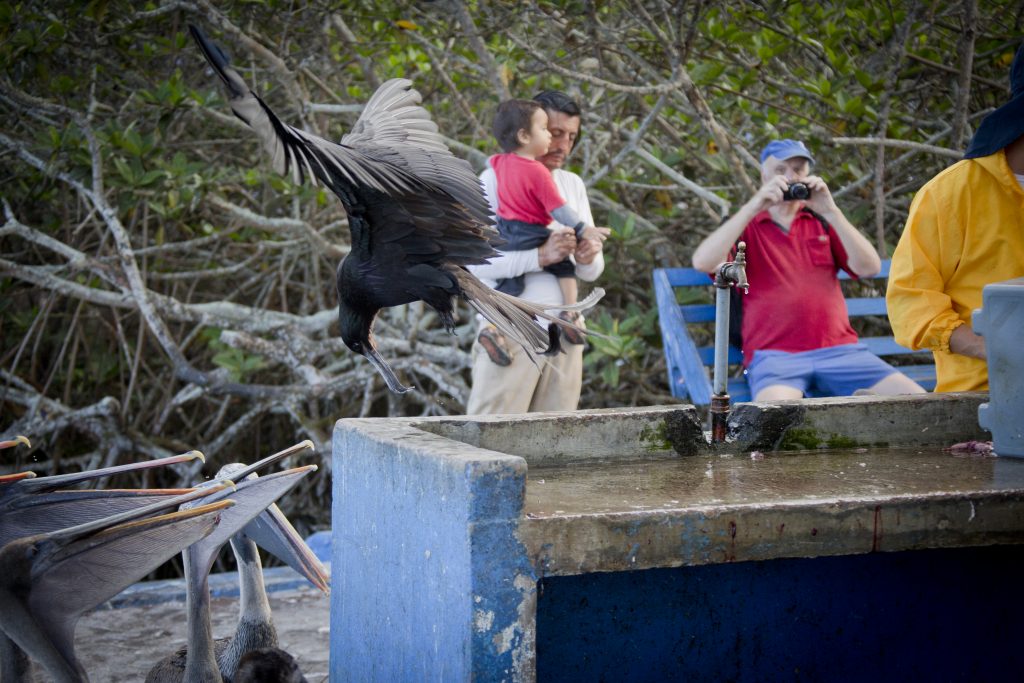
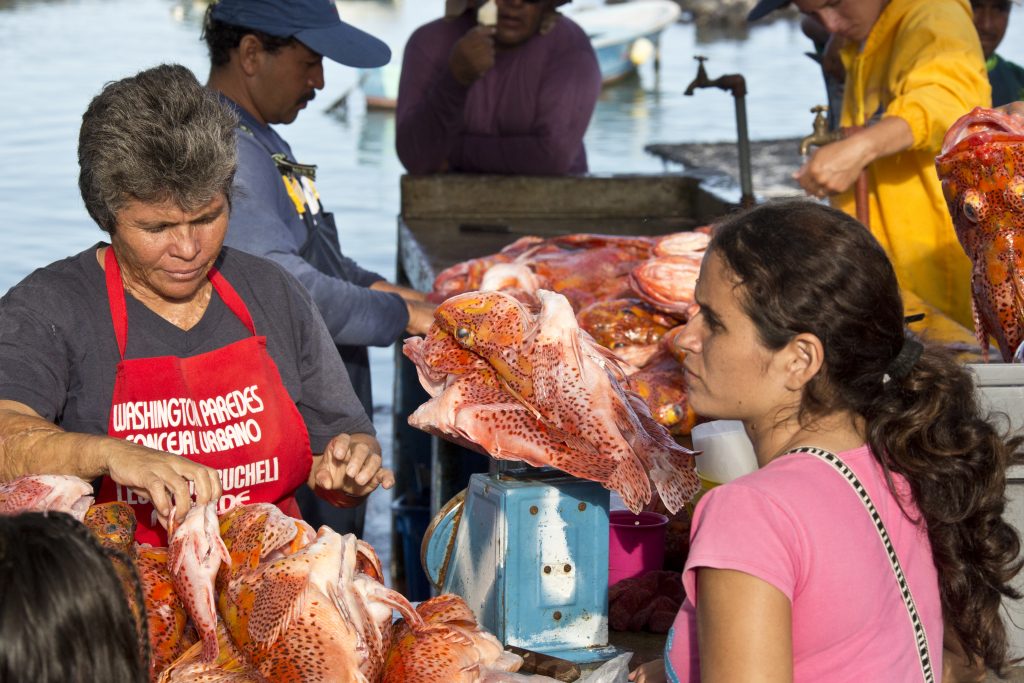
After a delicious dinner in town, the boat came down and picked us up to head to our next destination.
Until then…
–Jim
